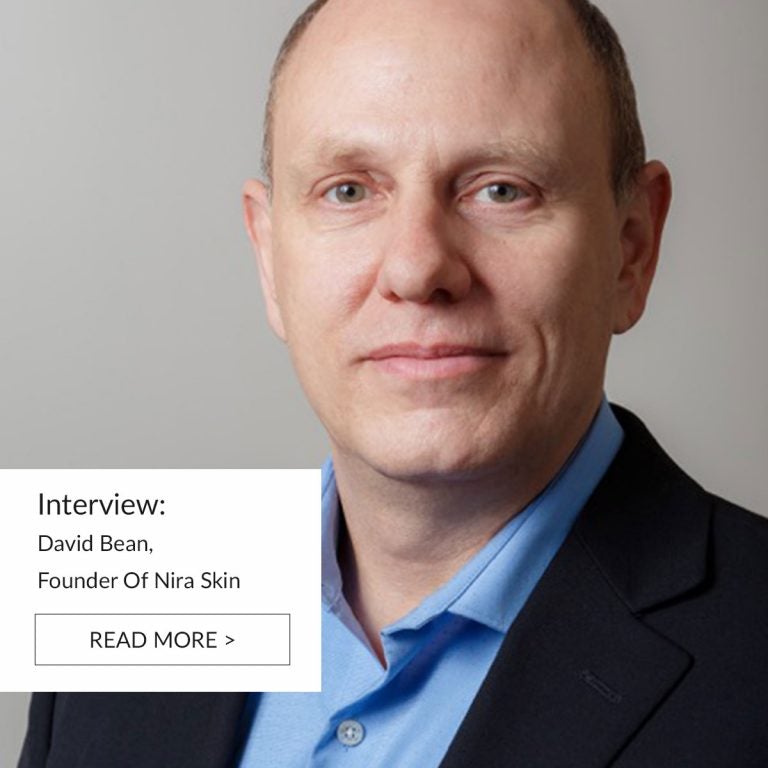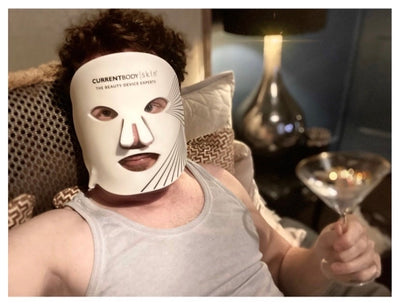Skincare
A mechanical engineer by trade, David Bean knows a thing or two about laser technology.
After inventing the core semiconductor Laser Diode Technology, a technology used in medical systems around the globe, David wanted to bring the power of professional laser technology in to the home - and so Nira Skin was born.
The brand currently consists of one hero anti-ageing device, the Nira Skincare Laser. Clinically proven and FDA cleared, the device has been proven to deliver professional results at home in just 60 days.
David explains: “We’d sell the original fractional technology to dermatologists and home systems but there was a couple of flaws, they were painful and they cost too much.”
Combining his engineering background with his passion for at-home technology, he completely transformed the makeup of the laser’s - making it perform slightly differently but with the same effective results.
“I’m not a beauty guy, I’m an engineer. I developed this with the same chip as the fractional laser but the way the chip’s driven and the way we do the optics is completely different, meaning you can have no pain but you get all the results.”

How does it work?
Designed to tackle fine lines and wrinkles in their most prominent areas, mainly around the eyes and the mouth, the device uses non-fractional laser to warm the deeper dermal layers of your skin - triggering the skin’s natural regeneration process and leaving skin fresher, rejuvenated and significantly younger looking.
“The claims on our box are clinically proven by the FDA, its proven to renew your skin and reduce wrinkles. Wrinkles are structural as opposed to fine lines which are textural.”
How do you use it? David explains…
“For effective results, you should use the device for one minute a day on each eye.”
Complete with five intensity levels, or ‘comfort levels’ as David calls them, select the intensity that feels most comfortable on your skin.
“As you place the device to your skin, you’ll hear two beeps. The first beep is the laser treating that area of the skin, the second beep is the device is confirming that the specific section of the skin is complete so indicates you to move on to another section.”
Unlike other devices, you can move it right into the corners of your eye and in the crows feet area.
“With similar devices like the Tria Age-Defying Eye Wrinkles Corrector, it’s hard to get such precision as you have to drag the device over the skin - not to mention the pain and redness.”
What does it feel like?
“You should use the device at a level where you feel warmth but no pain. Often people think beauty is pain or it’s a case of ‘no-pain, no gain’ - this certainly isn’t the case.”
Unlike other devices, there’s also no redness. If it’s hurting, David says you should go down a level where you feel warmth but no pain.
“If you feel pain, you don’t get any better results. The way I’d describe it is a little bit like when you exercise your muscles, you want to flex and stretch your muscles but you don’t want to pull them and cause damage.”
How does it work in comparison to Fractional Laser?
Fractional Laser is often painful because it concentrates the laser into tiny spots of the skin.
“Fractional Laser works by essentially destroying the calmer tissue, the idea is that you kill the calmer tissue and the tissue surrounding it helps it to heal quicker. Microneedling does this in a physical domain and this does it in an optical domain. It does work but it has side effects.”
David’s aim was to create a device that gave the same incredible results, without the pain and redness.
The Nira Skincare Laser uses non-fractional laser which works in a slightly different way. It heats the skin to the point where the dermal cells send out Heat Shock Formation, stimulating them to rejuvenate and increase Collagen production. It does this just below the pain threshold and well below the point where the tissue is damaged, hence why it’s completely pain free.

How long does it take to see results?
You should expect to see some minor results in 4 weeks, but the entire healing process is 8 weeks.
“Then at 3 months or 90 days, the results start to look really good.”
Does it really work?
“As an engineer, the key thing for me in does it work? We’ve carried out biopsies that show that we’re creating Collagen within the skin.” David explains.
“We’ve done lots of clinical studies, 69% of people reported an improvement within 3 months and 81% of users achieved and maintained wrinkle improvement for at least 2 months after use.”
“It’s remarkable because with any medical device or any prescription drug, it typically doesn’t work on 100% of the population, you’re lucky if it works on half - and now you have a wrinkle device that works on almost two thirds of people.”





